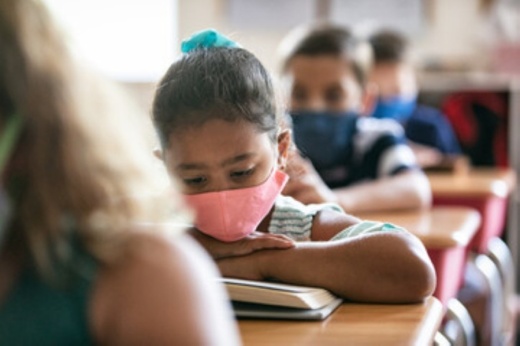Although overall enrollment has decreased, student retention appears to be up: There is a smaller number of students who did not return to the district this year than there was in either of the last two years, Chief Technology Officer Robert Bayard said at the workshop.
More than 2,300 students did not return this school year, Bayard said, and of those, about 1,300 moved away. The next largest portion was the 725 students who were pulled out to switch to home-schooling, and another 150 students left the district for private school, he said.
There were enrollment increases in grades 10 through 12, but those were minimal—fewer than 100 new students per grade, he said. The most significant decreases were seen at the pre-K, kindergarten and ninth-grade levels, per district data: About 43% of the overall enrollment decrease comes from these three grades. District trends are consistent with regional and national trends, officials said.
Administrators expressed concern over the idea of losing students during the pandemic, noting that many families of young learners are fearful of sending their kids to school given current circumstances. To try to regain some students, the district has developed multilingual marketing and social media campaigns to highlight the learning taking place in classrooms as well as the safety protocols being enacted. Brochures will also be distributed to local day care centers.
“We know that the students are in their community. We know they’re not being served,” said Holly Hughes, assistant superintendent of elementary education, during the workshop. “We know that our schools are a place of trust, and our families need to trust what’s happening inside those classrooms for them to bring their children back.”
The district’s fiscal year 2020-21 budget—which currently shows a $10 million deficit—was put together based on a 250-student enrollment increase, so the financial impact of this decrease could mean a wider deficit than previously expected, said Paul McLarty, deputy superintendent of business and support services. An additional $15 million deficit is possible if the district does not regain some of its lost students this year, but regaining absolutely no students would be a worst-case scenario and is not expected to happen, McLarty said.
Potential ways to make up revenue in the future include a 5% local homestead exemption, which could bring in an additional $6.2 million, or an increase to the tax rate, he added. The district recently approved its lowest tax rate in decades. Changing the district’s model to open enrollment could bring in more revenue as well, McLarty said, but this would not be an ideal option in terms of rapport with other districts if students from neighboring ISDs were to enroll at CCISD.
During the first nine weeks of the 2020-21 school year, CCISD recorded more than 95% classroom attendance for Clear Connections and brick-and-mortar students, Bayard said at the meeting. The district entered its second nine weeks Oct. 13, at which time families could choose to switch their child’s mode of instruction.
The ratio of virtual to in-person learners shifted only slightly in mid-October: About two in every three CCISD students chose brick-and-mortar classes at the start of the year, and district data shows roughly a 70/30 split between in-person and remote learning for the second nine weeks.
Approximately 42,000 students currently attend CCISD, and around 28,000 of those students are on campus, per district data. There is anecdotal evidence that families may be waiting to send their children back to on-campus instruction until the conclusion of this nine-week period, which would mean an influx of students returning to in-person classes after the holidays, district officials said during the workshop.
The upcoming legislative session could be critical in terms of determining how resources will be spent on the student population, and officials must take various factors into consideration to keep individual achievement at the forefront, McLarty said Oct. 13.
“We’ve got to be careful about what we do in our schools so that we don’t hurt student achievement,” he said. “It doesn’t get much better going forward if the Legislature has a bad session where they’ve got to cut. ... We’re just hoping for flat funding.”





